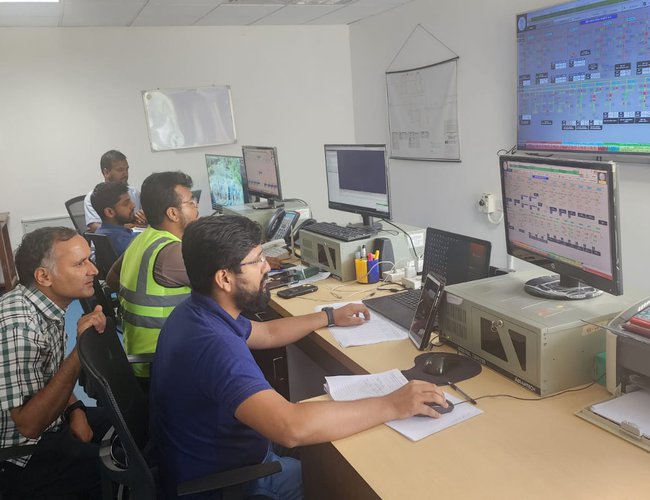
The Nepal Electricity Authority has expanded the capacity of the new Khimti 220 kV substation in Manthali municipality-13 Sankhe (Fulasi) of Ramechhap district.

The substation previously had only a power transformer rated at 100 MVA capacity, but an additional 200 MVA auto transformer has been installed, charged, and put into operation as of Tuesday. The capacity of the 200-132 kV substations has been raised to 300 MVA under the Ramechhap (Gajryang)-New Khimti transmission line project, partially backed by the Government of Nepal. The capacity of the 200-132 kV substations has been raised to 300 MVA under the Ramechhap (Gajryang)-New Khimti transmission line project, partially backed by the Government of Nepal. The text adheres to a formal register, including common academic segments, author and institution formatting, and consistent citation. The formatting will comply with governing style guides and encompass logical progression and causal connections between statements.
Additionally, the electricity from the 132 kV transmission line will surge to 220 kV from the transformer in Khimti. It will then be transmitted through the Khimti-Dhal Kebar 220 kV transmission line to Dhal Kebar. Technical abbreviation explanations will be provided upon their first use. Biased evaluations will be avoided, and the language will be clear, objective, concise, and neutral. The word choice will be precise, and grammar, spelling, and punctuation errors will be corrected. An additional transformer was installed due to insufficient capacity of the power transformer in the new Khimti substation to handle the electricity from the 132 kV transmission line.
The substation's capacity was inadequate as it absorbed electricity generated by the hydropower projects planned and built in the Tamakoshi, Khimti, and Likhu river watersheds and transmitted it to the new Khimti via the 132 kV transmission line. Due to this, some of the hydroelectric projects constructed mainly on the Likhu River were unable to transmit the entirety of their generated electricity.
Kulman Ghising, the Managing Director of the Authority, stated that the installation of new transformers at the Khimti substation has resolved the issue of electricity flow faced by hydropower projects operating in the Likhu River corridor. In response to the insufficient capacity of the Khimti substation, arrangements were made to connect the electricity supply of some hydropower projects built in the Likhu corridor through a short-term plan.
Managing Director Ghising stated that the commissioning of the new transformer has resolved all issues and eradicated the problem of electricity flow failure due to infrastructure insufficiency. He further confirmed that new projects would not be a problem, and the amount of electricity export to India would increase now.

Anup Gautam, project director, stated that the hydropower projects constructed in the river basins of Tamakoshi, Khimti, and Likhu produce electricity that has been made available for local distribution through the establishment of new infrastructure at the Khimti substation. In addition, Gautam noted that consumers have received ample, dependable, and high-quality power supply since the substation began providing electricity.
The electricity that remains after consumption has been conveyed through a 220 kV transmission line to Dhalkebar in Dhanush and a 132 kV line to Lamosanghu substation in Sindhupalchok.
The Upper Tamakosi Hydropower Project constructed the new 220 kV Khimti substation, which was equipped with a 100mV power transformer.
The 132 ÷ 33 ÷ 11 kV substation installed locally for power supply has been operational since last June. Construction of the infrastructure for a 132-33 KV substation in Naya Khimti commenced during the 2076-77 fiscal year. The cost of the substation amounts to approximately 800 million rupees.
- Global IME Capital’s “Samunnat Yojana 2” Mutual Fund Opens for Public Offering from July 6
- Jul 03, 2025
- Nepal Among Investment-Friendly Countries, Immense Opportunities Exist – Prime Minister
- Jul 03, 2025
- Supreme Court upholds appointment of 52 officials
- Jul 03, 2025
- Weather Forecast: Generally Cloudy In The Hilly Areas With Heavy Rainfall In Some Areas Of Bagmati And Koshi Province
- Jul 03, 2025
- MCA-Nepal Welcomes Continued U.S. Support for MCC Nepal Compact Implementation
- Jul 02, 2025















